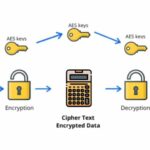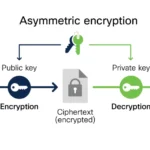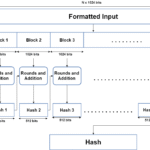The landscape of cryptography, the art and science of securing communication, is replete with intricate processes and systems. To the uninitiated, the realm of cryptography may seem daunting, strewn with complex terminologies and technical jargon that can easily dissuade potential learners. Nevertheless, a closer inspection reveals that grasping the fundamentals of basic cryptography is not only feasible but can also be an engaging and intellectually rewarding endeavor.
Cryptography has remained an indispensable pillar of information security, increasingly vital in an era where data breaches and cyber threats proliferate. With the ascent of digital communication, understanding the rudiments of cryptography becomes not merely an academic pursuit but a practical necessity. To embark on this journey, one must first demystify what constitutes basic cryptography.
At its core, cryptography encompasses techniques for encoding and decoding messages to keep information confidential. This process transforms plain text into coded text, referred to as ciphertext, using mathematical algorithms. The most rudimentary form of cryptography is substitution ciphers, where each letter in the plaintext is replaced by a letter some fixed number of places down the alphabet. This concept is simple, yet it lays the foundation for more sophisticated techniques.
The appeal of learning basic cryptography arises not just from its practical applications, but also from the intellectual stimulation it offers. Individuals are often captivated by the challenge of deciphering encrypted messages, evoking a sense of curiosity and competition. Engaging with ciphers taps into the human desire for problem-solving, leading to a paradigm shift in how one perceives both the complexity of the subject and its accessibility.
Essentially, the initial barrier to mastering cryptography lies in its perceived complexity. Many learners assume that one must possess advanced mathematical skills or a background in computer science to succeed. This notion can stifle interest even before the exploration begins. However, a more pragmatic approach reveals that while a basic understanding of mathematics is beneficial, extensive expertise is not invariably mandatory for grasping the foundational concepts.
The learning path typically begins with familiarization with key terminologies. Terms such as keys, ciphers, and algorithms become part of the learner’s lexicon. As one delves deeper into the subject, it becomes apparent that the process of encryption and decryption relies heavily on logical reasoning and an understanding of patterns rather than a mere command of mathematical equations. This realization cultivates a sense of confidence among learners, encouraging them to continue their exploration.
In addition to theoretical knowledge, practical applications serve as a compelling motivator. There are many online resources and tools that allow individuals to practice creating their own ciphers, encrypting messages, and even attempting to decode others’ communications. Such interactive platforms make the learning process engaging. When learners see their theoretical knowledge applied in real-time, it reinforces their understanding and enhances retention.
Moreover, as one progresses into intermediate concepts, topics such as symmetric and asymmetric cryptography emerge. Symmetric cryptography, where the same key is used for both encryption and decryption, contrasts sharply with asymmetric cryptography, which utilizes a pair of keys—public and private. The distinction between these two archetypes opens the door to richer discussions about digital signatures, public key infrastructure, and the safety of online transactions.
Interestingly, societal implications further enrich the study of cryptography. With the advent of the digital age, the ethical dimensions of data privacy and information security come to the fore. Understanding cryptography becomes pivotal not merely for personal security but for grasping larger narratives about governance, surveillance, and individual privacy rights. This intersection of technology and ethics can spur learners toward a broader contemplation of their role in an increasingly digital society.
It is worth noting that, like mastering any skill, learning cryptography requires perseverance. Encountering challenges, whether deciphering a complex code or grappling with intricate theories, is part and parcel of the journey. In this respect, the ability to view obstacles as opportunities for growth becomes essential. A determined mindset transforms difficulties into stepping stones, facilitating a deeper understanding of the subject.
The community aspect of cryptography also enhances the learning experience. Numerous forums and online groups, comprising both novices and experts, offer a platform for collaboration, inquiry, and discussion. Engaging with fellow learners fosters a sense of belonging and stokes one’s curiosity, inviting different perspectives and methodologies. Through sharing insights and experiences, one can unlock new avenues for exploration that might not have been apparent in isolation.
In conclusion, learning basic cryptography is indeed achievable for those willing to engage with the material. While the initial perception of difficulty may deter some, a thorough examination of the subject reveals a rich tapestry of knowledge that is not only accessible but also profoundly relevant. The journey through cryptography can shift one’s perspective on information security, fostering curiosity and inviting deeper contemplation of its societal ramifications. In an age where data privacy is paramount, equipping oneself with the basics of cryptography is not just beneficial; it is essential—transforming a potentially intimidating task into an enlightening adventure.









Leave a Comment